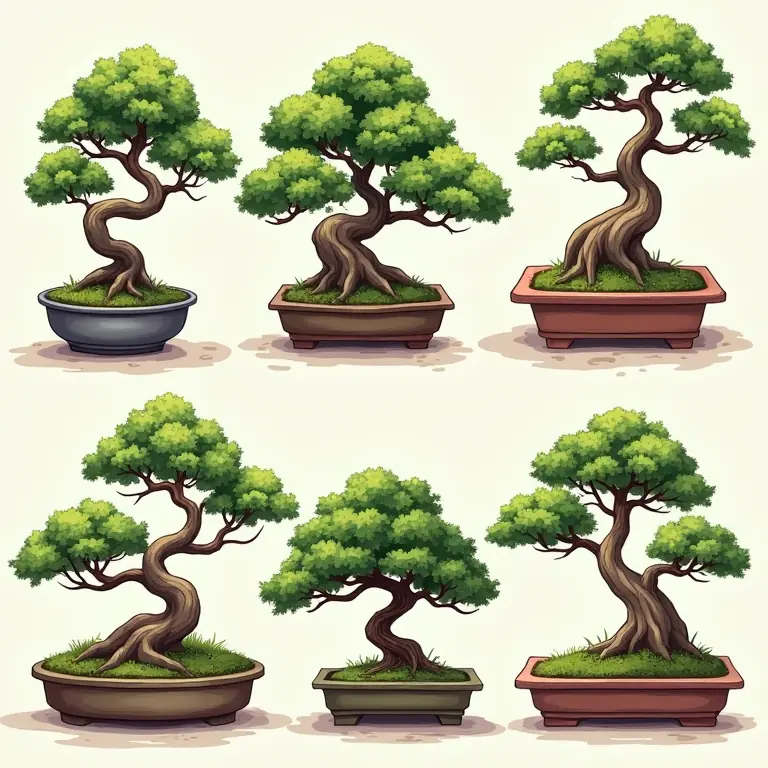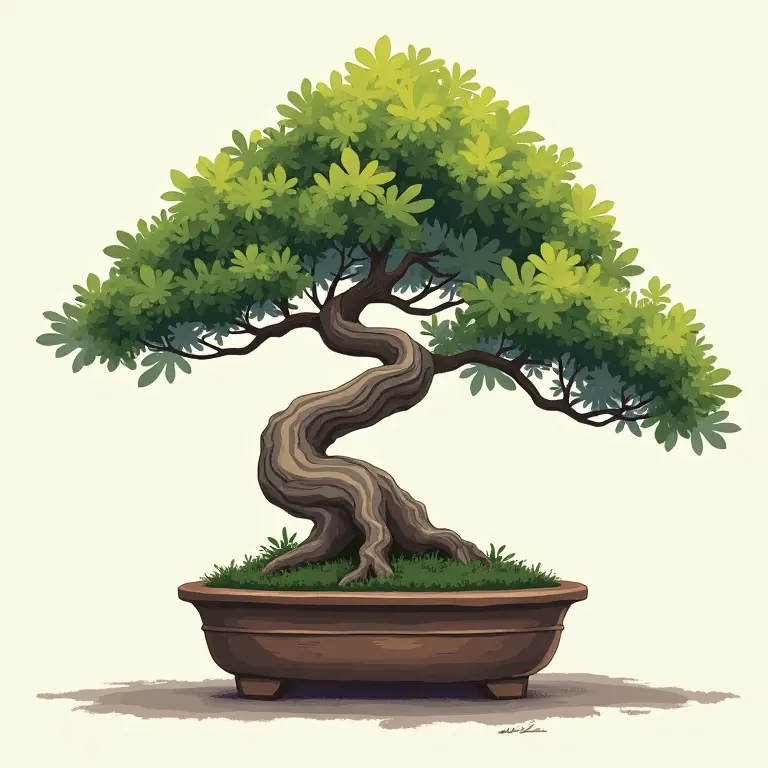Build a Better Bonsai: A Friendly Guide to Miniature Tree Cultivation
Welcome to the enchanting world of bonsai! The art of growing miniature trees isn’t just a hobby; it’s a living, breathing connection to nature, a meditative practice, and a stunning display of horticultural skill. But don’t let the artistry intimidate you. This guide is designed for beginners, breaking down the complexities into manageable steps. We’ll cover everything from choosing the right tree to ongoing care, helping you cultivate a beautiful bonsai that will thrive for years to come.
What is Bonsai?
Bonsai (盆栽), literally translated from Japanese, means ‘planted in a container’. It’s more than simply dwarfing a tree. It’s the art of aesthetically shaping and containing trees in small containers. The goal isn’t to create a perfectly miniature replica of a full-sized tree, but rather to evoke the *essence* of a tree, capturing its age, resilience, and beauty in a condensed form. This is achieved through a combination of techniques like pruning, wiring, and careful root management.
The history of bonsai stretches back over a thousand years, originating in China (where it was known as penjing) before being adopted and refined in Japan. Over time, specific styles and techniques evolved, each with its own unique aesthetic. Today, bonsai is a global art form, enjoyed by enthusiasts around the world.
Choosing Your First Bonsai: Tree Types & Considerations
Not all trees are created equal when it comes to bonsai. Some species adapt to container life and pruning far better than others. Here are some excellent choices for beginners:
- Juniper (Juniperus spp.): Extremely forgiving and readily available. They tolerate pruning well and can be shaped into a variety of styles. Good for outdoor bonsai.
- Ficus (Ficus spp.): Popular for indoor bonsai due to their tolerance of lower light conditions. They back-bud readily, meaning they can sprout new growth even after heavy pruning.
- Chinese Elm (Ulmus parvifolia): A deciduous tree that offers beautiful bark texture and attractive foliage. Adapts well to bonsai techniques.
- Japanese Maple (Acer palmatum): Known for its stunning autumn colors. Requires more careful attention to watering and protection from harsh sunlight.
- Pine (Pinus spp.): A classic bonsai subject, but more challenging for beginners due to its specific pruning and wiring requirements.
Consider these factors when selecting a tree:
- Climate: Choose a species that is suited to your local climate. Outdoor bonsai need to experience seasonal changes.
- Indoor vs. Outdoor: Some trees thrive indoors, while others require outdoor conditions.
- Availability: Start with a species that is readily available at your local nursery or bonsai supplier.
- Your Skill Level: Begin with a forgiving species like Juniper or Ficus before tackling more challenging trees.
Essential Bonsai Tools
While you can start with just a few basic tools, having the right equipment will make the process much easier and more enjoyable. Here’s a rundown of essential bonsai tools:
- Concave Cutters: Used for removing branches flush with the trunk, creating a clean, recessed cut that will heal more quickly.
- Branch Cutters: For larger branches that concave cutters can’t handle.
- Wire Cutters: Specifically designed for cutting bonsai wire without damaging the tree.
- Bonsai Wire: Aluminum or copper wire used to shape branches. Different gauges are used for different branch thicknesses.
- Root Rake: Used to gently loosen and untangle roots during repotting.
- Chopsticks or a Root Hook: For carefully manipulating the soil around the roots.
- Bonsai Shears: For trimming leaves and fine branches.
- Turntable: A rotating platform makes it easier to work on all sides of the tree.
- Watering Can with a Fine Rose: Provides a gentle, even watering.
Potting and Soil: The Foundation of Your Bonsai
The pot and soil are critical to the health of your bonsai. Choose a pot that complements the tree’s style and size. Drainage is paramount; bonsai pots must have drainage holes. The soil mix is equally important. Standard potting soil is *not* suitable for bonsai. It retains too much water and doesn’t provide adequate aeration.
A good bonsai soil mix typically consists of:
- Akadama: A hard-baked Japanese clay that provides excellent drainage and aeration.
- Pumice: A lightweight volcanic rock that also improves drainage.
- Lava Rock: Adds further drainage and aeration.
- Organic Matter (Optional): A small amount of peat moss or compost can be added to retain some moisture, but use sparingly.
The proportions of these ingredients will vary depending on the tree species and your climate. A general guideline is a 1:1:1 ratio of Akadama, Pumice, and Lava Rock.
Pruning: Shaping Your Miniature Tree
Pruning is the cornerstone of bonsai. It’s how you control the tree’s growth, maintain its shape, and encourage ramification (the development of dense branching). There are two main types of pruning:
- Maintenance Pruning: Regularly removing new growth to maintain the tree’s shape and size.
- Structural Pruning: More drastic pruning to remove unwanted branches and establish the tree’s basic structure.
Pruning Techniques:
- Pinching: Removing the tips of new shoots to encourage back-budding.
- Defoliation: Removing leaves (usually on deciduous trees) to encourage smaller leaves and denser branching.
- Branch Selection: Carefully choosing which branches to keep and which to remove, considering the overall design.
Always use sharp, clean tools when pruning. Make cuts at a slight angle, just above a bud or branch. Avoid leaving stubs, as they will attract pests and diseases.

Wiring: Guiding Growth
Wiring is used to bend and shape branches, creating the desired aesthetic. It’s a temporary technique, as the wire will eventually need to be removed to avoid damaging the bark.
Wiring Techniques:
- Choose the Right Wire: Use aluminum or copper wire that is the appropriate gauge for the branch thickness.
- Wrap at a 45-Degree Angle: This provides the most secure hold.
- Avoid Crossing Wires: This can damage the bark.
- Monitor Regularly: Check the wire frequently to ensure it’s not cutting into the bark. Remove the wire when the branch has set in its new position.
Watering and Fertilizing
Watering is crucial for bonsai health. The frequency will depend on the tree species, pot size, soil mix, and climate. Check the soil moisture daily and water when the top inch feels dry. Water thoroughly, ensuring that the entire root ball is moistened. Avoid overwatering, as this can lead to root rot.
Fertilizing provides the nutrients your bonsai needs to thrive. Use a balanced fertilizer specifically formulated for bonsai. Fertilize regularly during the growing season (spring and summer) and reduce or stop fertilizing during the dormant season (fall and winter).
Repotting: Renewing the Roots
Repotting is necessary to refresh the soil, prune the roots, and maintain the tree’s health. The frequency of repotting will depend on the tree species and its growth rate. Younger trees typically need to be repotted every 1-2 years, while older trees can be repotted every 3-5 years.
Repotting Steps:
- Gently remove the tree from its pot.
- Use a root rake to loosen the soil and untangle the roots.
- Prune the roots, removing about one-third of the root mass.
- Place a layer of fresh bonsai soil in the bottom of the pot.
- Position the tree in the pot and fill in with more soil.
- Water thoroughly.
Bonsai Styles: Expressing Your Creativity
Bonsai isn’t just about shaping a tree; it’s about creating a miniature landscape that evokes a specific feeling or represents a particular scene. There are many recognized bonsai styles, each with its own characteristics:
- Formal Upright (Chokkan): A straight, tapering trunk with symmetrical branching.
- Informal Upright (Moyogi): A slightly curved trunk with asymmetrical branching.
- Slanting (Shakan): A trunk that leans to one side, suggesting a tree growing on a slope.
- Cascade (Kengai): A trunk that cascades down below the pot’s rim.
- Semi-Cascade (Han-Kengai): A trunk that cascades down, but not as dramatically as a full cascade.
- Literati (Bunjin-gi): A sparse, elegant style with a slender, often contorted trunk.
Experiment with different styles and find what resonates with you. Don’t be afraid to break the rules and create your own unique bonsai!
Troubleshooting Common Problems
Even with the best care, bonsai can sometimes encounter problems. Here are a few common issues and how to address them:
- Yellowing Leaves: Can be caused by overwatering, underwatering, nutrient deficiency, or pests.
- Leaf Drop: Often a sign of stress, such as sudden changes in temperature or humidity.
- Pests: Aphids, spider mites, and scale are common bonsai pests. Treat with an appropriate insecticide.
- Root Rot: Caused by overwatering. Repot the tree with fresh soil and improve drainage.
Resources and Further Learning
The world of bonsai is vast and ever-evolving. Here are some resources to continue your learning:
- Local Bonsai Clubs: A great way to connect with other enthusiasts and learn from experienced growers.
- Bonsai Nurseries: Offer a wide selection of trees, tools, and supplies.
- Online Forums and Websites: Provide a wealth of information and a platform for sharing knowledge.
- Books on Bonsai: There are many excellent books available that cover all aspects of bonsai cultivation.
Ready to dive deeper into creative hobbies? Check out this guide on building a better beatbox, or perhaps gift wrapping techniques. If you’re looking for a different kind of creative challenge, you might enjoy building a better board game.
Bonsai is a rewarding journey that requires patience, dedication, and a love of nature. Embrace the process, learn from your mistakes, and enjoy the beauty of your miniature trees. Happy growing!


Discussion about this post